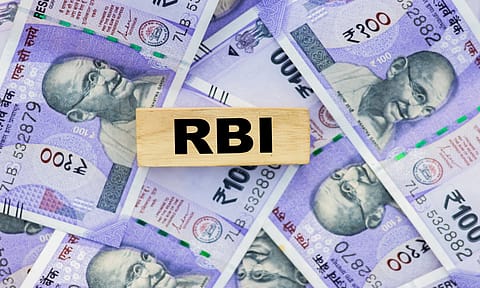Experts expect RBI to lower repo rate by 25 bps to boost MSME credit and festive spending
RBI and government push on spending with repo cuts, tax tweaks, and GST changes to boost consumption

To increase credit flow to MSMEs and promote festive season spending, experts anticipate a 25-basis-point repo rate cut by the Reserve Bank of India (RBI) in its upcoming policy review on October 1. The expected rate cut could also bolster the overall economic growth,lanalysts believe.
Deepak Aggarwal, co-founder, co-CEO and CFO of Moneyboxx Finance Limited, said, "With inflation at multi-year lows and the recent GST rationalisation providing a breather to consumers and businesses, the RBI has room to deliver a 25-basis-point rate cut in the upcoming MPC meeting. Such a step would lower borrowing costs, spur demand, and ease credit flow—especially critical for MSMEs and small entrepreneurs in rural and semi-urban India."
According to analysts, lowering the repo rate now will reduce borrowing costs ahead of the festive season and sustain credit flow to small businesses and the housing sector. At the same time, the RBI should pair any cut with clear forward guidance and ensure that banks and NBFCs pass on the benefit quickly, while keeping an eye on risks such as rising government bond yields, high state borrowing, and pockets of sticky core inflation. This combination can anchor confidence and keep India’s growth story on track.
Rohit Arora, CEO & co-Founder, Biz2X & Biz2Credit, said, “A 25-basis-point cut at the upcoming MPC meeting would be a timely and practical step to support credit growth for MSMEs and strengthen the lending ecosystem across banks, NBFCs and fintechs. Inflation has dropped sharply, with SBI research projecting CPI near 1.1% in October, and the new GST rules implemented on September 22 already reducing tax rates on many goods and services. Together, these factors give the RBI room to ease policy without risking price stability."
“The Reserve Bank of India and the government have, this year, taken bold steps to stimulate consumer spending through measures such as repo rate cuts, tax revisions, and GST rationalisation to boost domestic consumption,” said Shishir Baijal, chairman and managing director of Knight Frank India. “However, with the recent economic volatility, housing demand is beginning to show signs of clear moderation compared to the momentum witnessed over the past five years. To sustain this momentum and encourage buyers further, a timely rate cut could provide the much-needed boost to the housing market and help maintain the upward cycle in real estate.”
However, Vinayak Magotra, Product Head and Founding Team, Centricity WealthTech, said, "We expect RBI to maintain a pause on the rate cuts in the upcoming Monetary Policy meeting. The recent GST rationalisation is expected to provide a short-term boost to consumption, especially ahead of the festive season. At the same time, liquidity remains ample, with the banking system still absorbing the impact of the CRR reductions implemented earlier this year in four tranches starting in September."
Although the tariff situation requires constant monitoring, with the trade talks still in process with the United States, the recent data showing a narrowing trade deficit, backed by strong performance in both services and merchandise exports, provide some comfort. "The growth forecasts for FY26 have been maintained at 6.5% in the last two meetings. This coupled with the recent quarterly real GDP at 7.8%, underscores confidence that there are no immediate downside risks to growth. Meanwhile, the downward revision of CPI for FY26 from 3.7% to 3.1% provides the additional policy flexibility as price pressures are expected to remain contained," said Magotra.